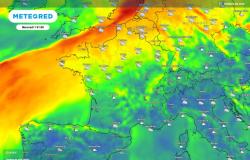
Last September, a first study revealed that the Neolithic revolution was also a genetic revolution; agriculture seems to have “accelerated” the evolution of our genome, in particular by “multiplying” the number of copies of genes involved in starch synthesis.
Now, a new static analysis applied to ancient DNA illustrates how genetic traits beneficial to the survival and well-being of our European ancestors appeared – and also disappeared – in response to changes in their lifestyle . The results were published in the journal Nature Communications on November 12, 2024.
Deciphering human evolution using ancient DNA
In the DNA of modern humans, the authors of the study introduce in a press release, it is difficult to find traces of ancient evolutionary changes due to natural selection – when certain traits useful for survival become more frequent. But these marks in the genome can disappear over time and generations.
World tour of threatened archaeological sites
The research team from the Universities of Texas in Austin and California in Los Angeles (United States) therefore used a new statistical approach, which made it possible to “detect signs of natural selection more effectively than traditional methods”.
It relied on more than 700 ancient DNA samples from archaeological sites across Europe. They have been grouped into four periods: the Neolithic (around 8,500 to 2,200 BC), the Bronze Age (around 2,200 to 800 BC), the Age of Iron (ca. 800 BC to AD 476) and the Historic period (from the late Roman period, after 476 AD).
This approach allowed them to track, in the DNA of ancient populations, genetic changes that occurred in response to lifestyle changes, such as the transition from hunting and gathering to agriculture. “Our method provides a clearer view of how and when certain traits were selected for, particularly when these signals have been lost in modern genomes”develops Devansh Pandey, student in cellular and molecular biology at the University of Texas and co-author of the study.
Developments shaped by new lifestyles
Indeed, by “zooming in” on key periods, experts were able to observe how genes evolved when humans lived closer to each other and to domesticated animals. In total, they identified fourteen regions of the genome that appear to have undergone significant natural selection during the Neolithic, Bronze Age, Iron Age and Historic periods. They give the example of genes associated with vitamin D production and milk digestion, which showed “strong signs of selection” – they were in some way “preferred” by nature – during the most recent periods. more recent.
Light skin pigmentation likely helped early European farmers produce vitamin D in less sunny climates. As for the ability to digest dairy products, with livestock farming becoming common in Europe, “it is possible [qu’elle] was important for survival during periods of crop failure, food shortages and disease.says Vagheesh Narasimhan, assistant professor of integrative biology, statistics and data sciences at the University of Texas and co-author of the study.
He and his team also found that over several periods, genes linked to immunity came under selective pressure, likely as populations adapted to new diseases introduced by agriculture and subsequent migrations.
However, about half of these adaptive signals were only detectable in the oldest periods. This means that due to genetic drift or significant intermixing, they subsequently became extinct, despite the benefits they provided. The researchers conclude:
This research provides an unprecedented view of how European populations adapted to environmental challenges over millennia, helping us understand how certain traits persisted, disappeared or were modified over time.





